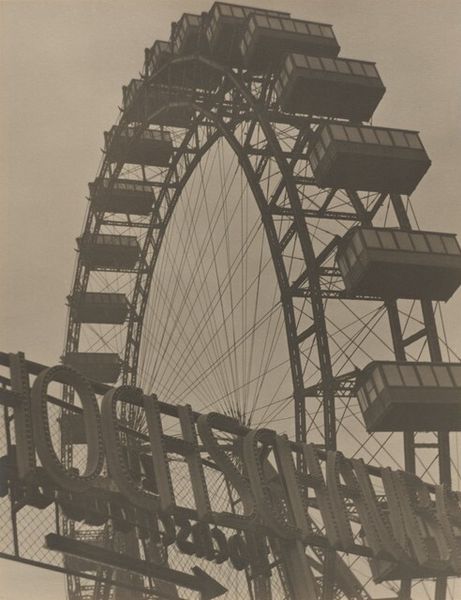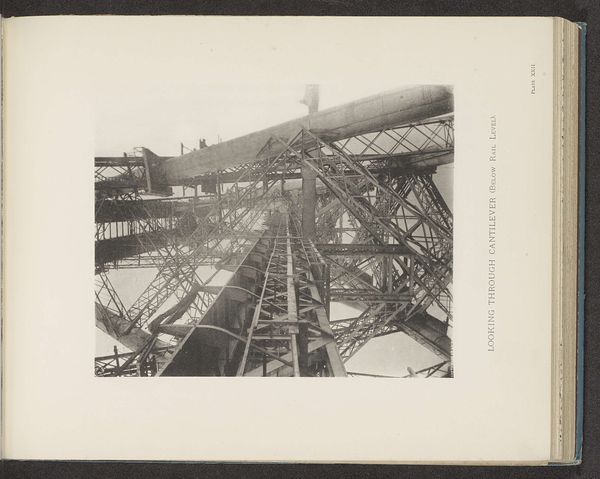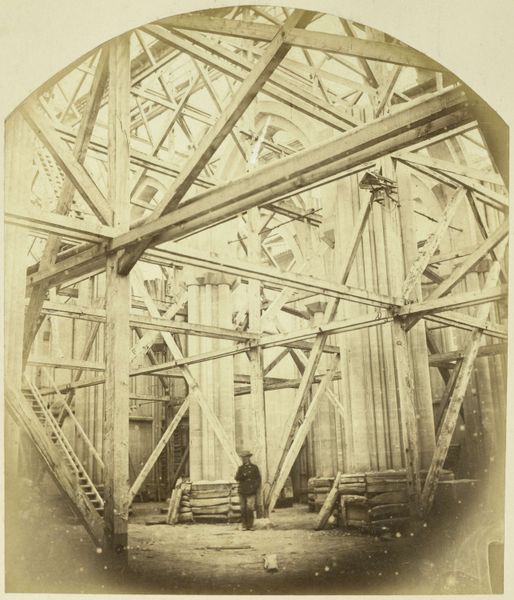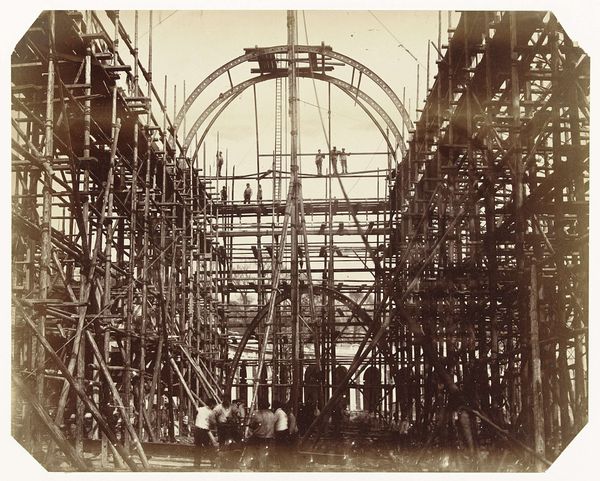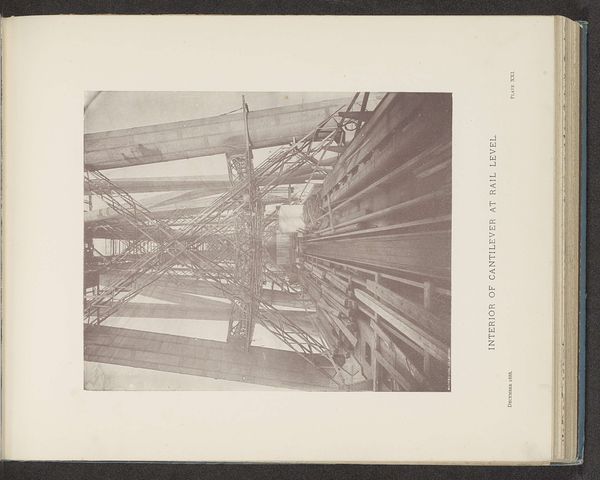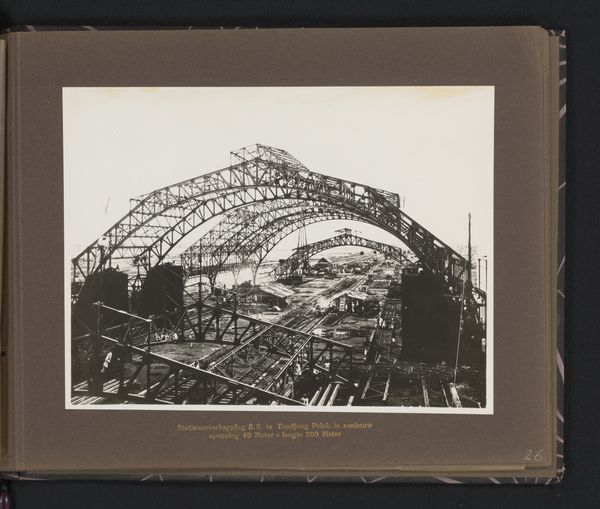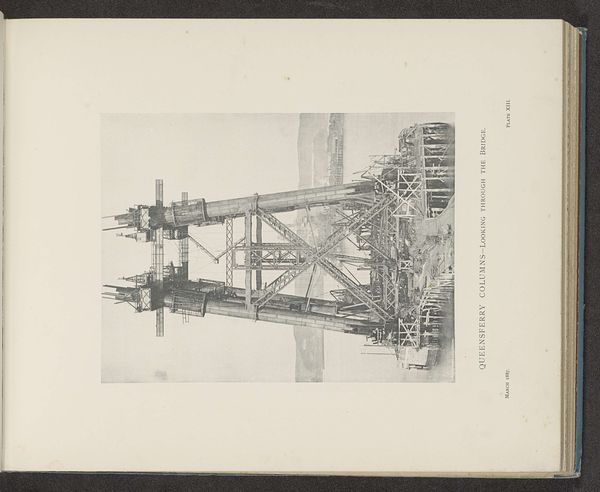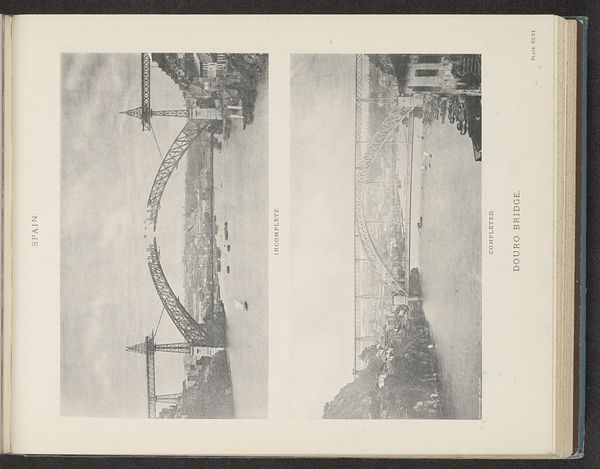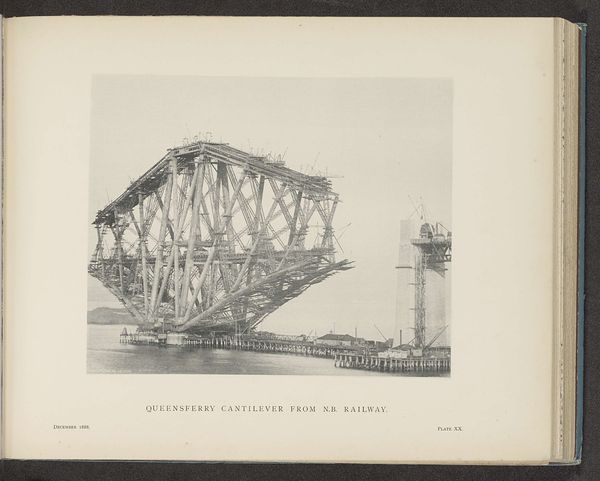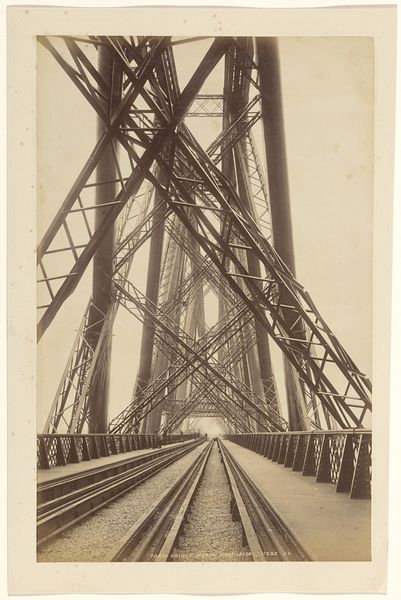
photography
#
pictorialism
#
landscape
#
photography
#
cityscape
Dimensions: height 172 mm, width 105 mm
Copyright: Rijks Museum: Open Domain
Curator: Here we have an intriguing early photograph, titled "Reuzenrad in Earl's Court in Londen," dating roughly between 1895 and 1906. It's a pictorialist photograph of a Ferris wheel. Editor: The muted sepia tones give it such an ethereal, almost dreamlike quality. It dwarfs the surrounding cityscape, projecting a fascinating blend of promise and impermanence. Curator: Precisely. The choice of pictorialism is key, with its emphasis on artistic effect. The photographer isn't merely documenting; they're curating an impression of modernity, industry, and public spectacle all at once. Consider how the towering structure of the wheel itself embodies both technological advancement and the gendering of public amusements that was specific to the era. Editor: Do you see also the photograph in light of the era’s fascination with grand exhibitions and engineering feats? Structures like this symbolized progress and invited mass participation in shared cultural experiences. And the photo’s mood aligns, too. There's a trace of the industrial, but then a lot of room for celebration and the democratic act of seeing. Curator: The political backdrop is crucial, as such projects helped shape the politics of representation, especially class and national identity. The working class being represented here are having fun, yes? This has some pretty important historical weight in our visual records. Editor: It really underscores how photography, even in its nascent stages, was used not just to record reality but to frame particular narratives about urban life and technological progress. Now I understand how Y & S achieved such resonance by framing this monument of human innovation with such deliberate and ethereal effects. The wheel is framed, literally and metaphorically, by artifice. Curator: Absolutely. Pictorialism itself represents a constructed vision. It's vital to see this artwork and the way that it plays with how the world presents the very issues. This piece pushes viewers to dissect the role of art, technology, and visibility in social constructions of leisure and spectatorship. Editor: Yes, I see how deeply implicated photographs like these were in shaping and reinforcing the societal structures and ideologies of their time. I've completely readjusted my understanding of photography's social weight here. Thank you!
Comments
No comments
Be the first to comment and join the conversation on the ultimate creative platform.
